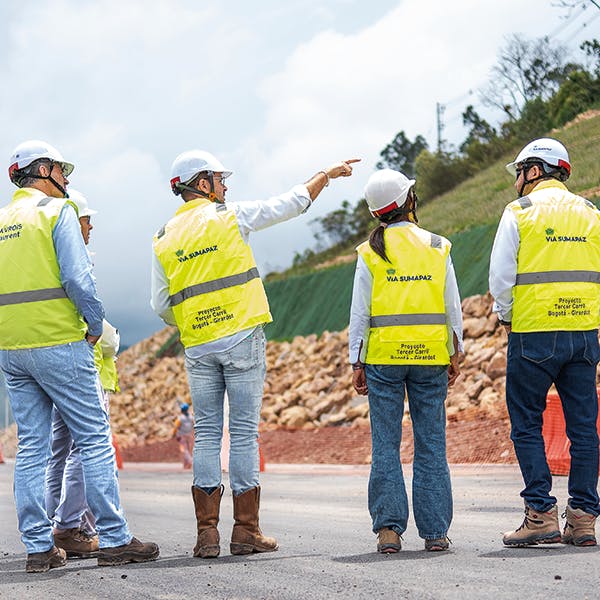A TRUSTED PARTNER TO BETTER ANTICIPATE RISKS
In the face of climate change, the concession model is the perfect response to the urgent priority of building and maintaining resilient infrastructure.

Planning ahead for greater adaptability
In 2024, VINCI Concessions carried out a vulnerability study of over 80 of its entities. The risk mapping obtained through this analysis enabled VINCI Concessions to draw up adaptation plans, prioritising infrastructure presenting the highest levels of risk. These plans can now be used to plan the work needed to face those risks – whether it be the risk of flooding or water stress, depending on the region in question. VINCI Concessions is therefore carrying out specific studies and projects in each of its business lines according to the risks that have been identified. After carrying out a resilience study in 2022/2023 to assess vulnerabilities, the operator of the SEA HSL, LISEA, created an adaptation plan in 2024 to face climate hazards that are likely to occur in the coming years – particularly the risk of forest fires. With the help of VINCI Energies, VINCI Railways has developed a system to detect these fires using artificial intelligence that will be gradually rolled out to the sections of the railway line that are most at risk. VINCI Concessions works to ensure the resilience of its infrastructure all over the world.
In Peru, VINCI Highways – concession holder of the two-lane Lima Expresa – has reinforced the banks of the Rímac River to prevent the risk of an impact from any floods, for example due to the El Niño phenomenon. Kansai International airport, a unique structure built on an artificial island in Osaka Bay in Japan, is working hand in hand with the academic community: the Kyoto University Disaster Prevention Research Institute and the Kumamoto University Faculty of Engineering.
Together, they have modelled the impact of Typhoon Jebi in 2018, enabling teams to gain new skills in anticipation and resilience. They can then harness cutting-edge expertise to boost the airport’s resilience in the event of a natural disaster, for example by installing four-legged concrete structures to absorb the shock of marine currents. The concession model enables us to invest and act throughout the entire lifecycle of structures and infrastructure with a view to adapt and bolster resilience. Between 2019 and 2020, VINCI Autoroutes and Carbone 4 carried out a criticality analysis of the entire network using the CEREMA L3 analysis method. This major study integrated three different timeframes (1996-2005, the future focusing on 2035 and the future focusing on 2085) and two climate change scenarios. Fourteen infrastructure elements (such as highway structures, road surfaces and walls) were exposed to 11 climate risks (rainfall and runoff, floods and rising water levels, drought, extreme heat, etc.). This macroscopic study enabled the analysts to identify the level of criticality of infrastructure elements across the entire 4,443-km network in light of climate change and how it is expected to develop.
It also enabled them to single out the most significant hazards for the infrastructure, as well as which sections are most at risk. The conclusions found the flood and rising water level and fire hazards to be the priority, and the Mediterranean region to be the area most exposed, with higher criticality, although the situation is projected to worsen significantly in the northwest area of the network according to the timeframe focusing on 2085. In order to continue with data acquisition, in 2024 VINCI Autoroutes tasked CALLENDAR with a new risk exposure assessment for its network regarding flood, fire, extreme heat and the swelling of clay soils. This assessment focuses on how risk exposure is set to change, using the benchmark scenario published by TRACC in 2023 (GWL30, which projects global warming in 2100 of 3°C worldwide, and 4°C in mainland France).
